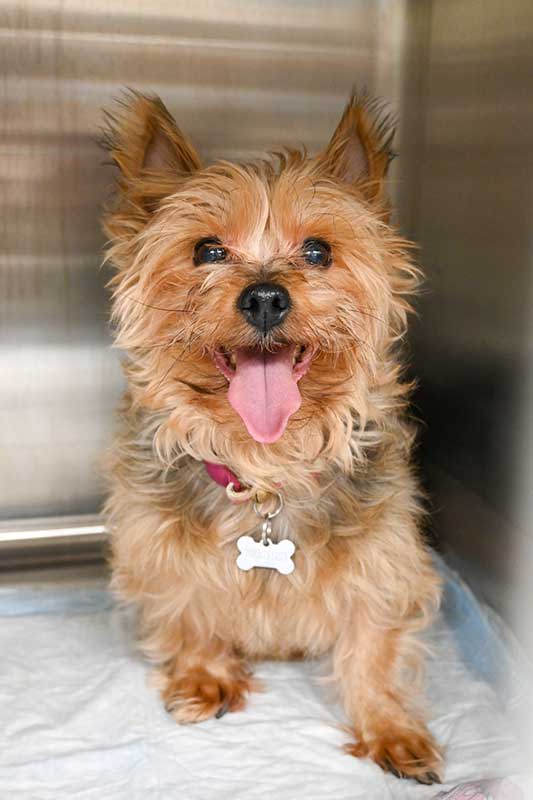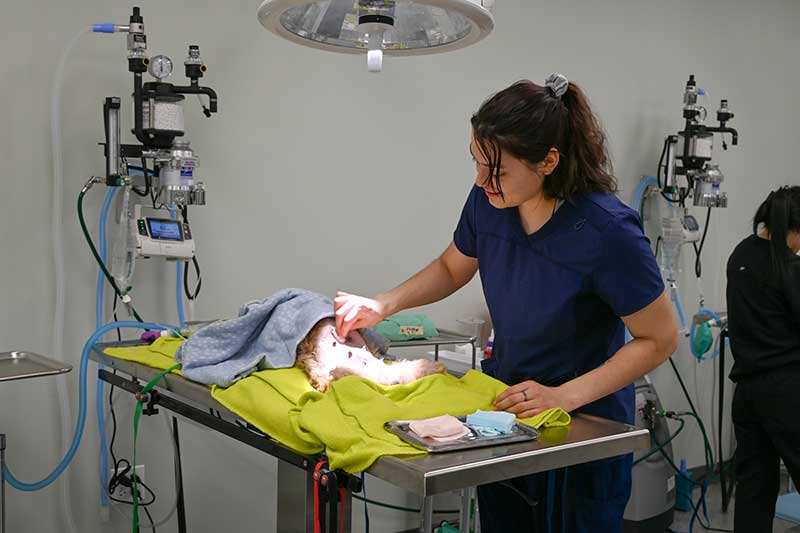One of the most common questions in our call center is: “Why do we avoid spaying female dogs while they’re in heat?” Dr. Karen explains why timing matters when it comes to spaying.

When a female dog is in estrus (“in heat”), the blood supply to her uterus and ovaries is greatly engorged in preparation for possible mating and pregnancy. The enlarged blood vessels pose a significantly increased risk for post-op bleeding after an OVH (ovariohysterectomy or “spay” surgery), even when extra surgical precautions are taken. Most dogs don’t willingly comply with the doctor’s orders of “taking it easy for 2 weeks”!
In addition, if a dog is spayed while in heat, it will take two full weeks for her hormone levels to quiet down again. This means male dogs will still be attracted to her and could try to mount, resulting in extreme pain, as well as possible internal bleeding and potential abdominal infection (peritonitis), which could be fatal. Even if a mismating occurs, it is better to wait for two weeks before having her spayed.
Spaying during a dog’s heat cycle can also lead to a pseudopregnancy (or ”false” pregnancy) occurring 45-60 days later. This is due to progesterone levels falling quickly after the ovaries are removed, which increases prolactin levels. This hormone causes mammary development, milk production, and typical mothering behaviors. Delaying a spay surgery until 8-12 weeks after a heat cycle will prevent this.
However, there are times when spaying during a heat cycle is simply unavoidable. Some pets may have irregular or silent heat cycles, meaning they do not show typical signs like swelling or discharge and may be unknowingly spayed while in heat. In other cases, the urgency of spay surgery outweighs the risks. Rest assured, our highly skilled veterinary team will take excellent care of your pet—regardless of the cycle’s timing.
If your pet needs to be spayed or neutered, call Paws for a Cause Vet Care at 630-961-8000 to schedule an appointment.
